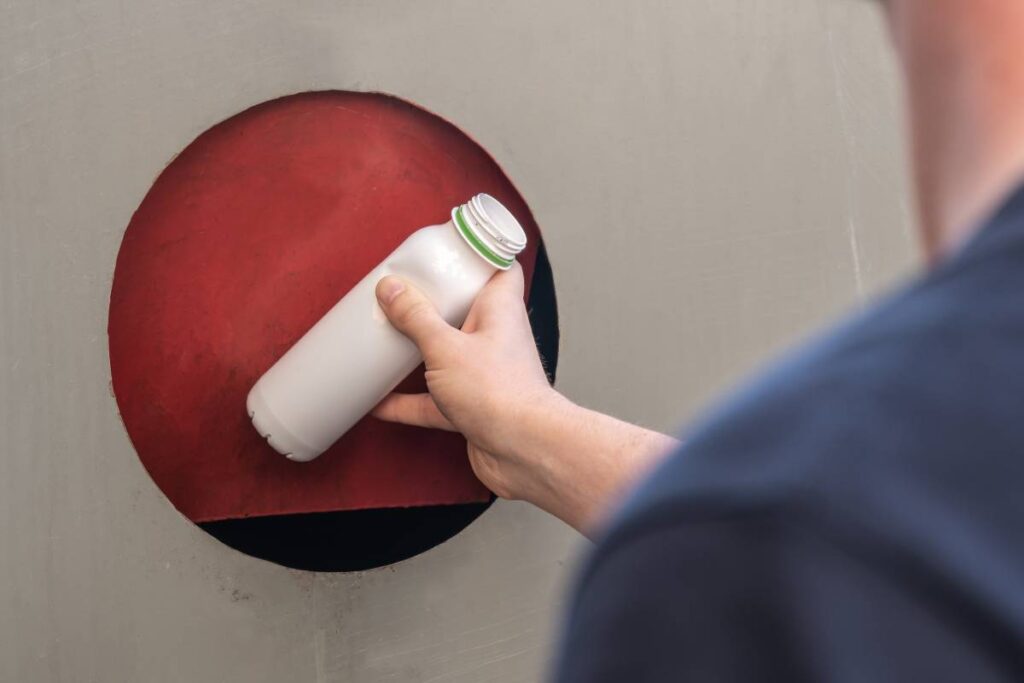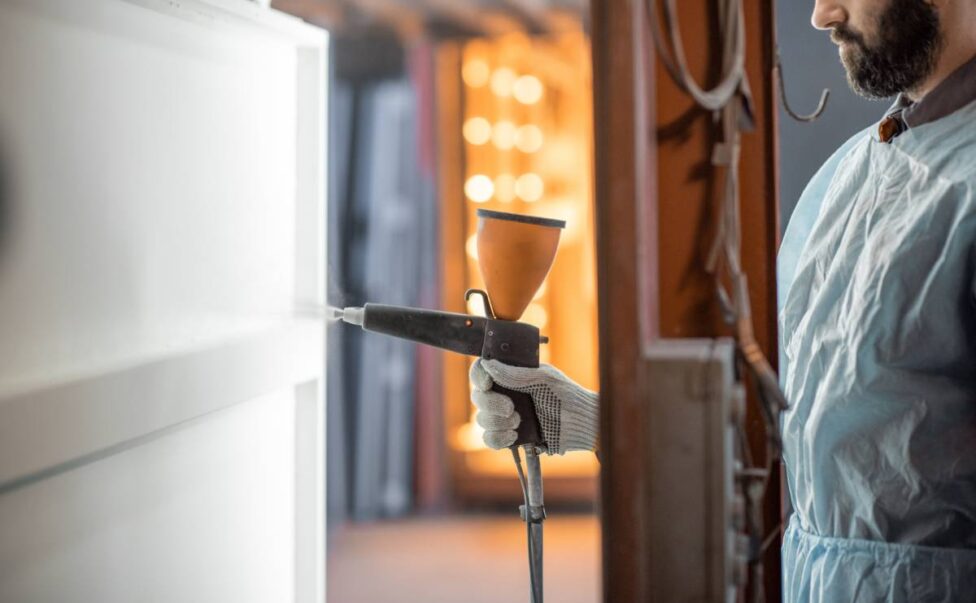What Is Intumescent Paint? How is intumescent paint made? How Does It Work For Fire Protection?
In modern construction and industrial design, safety is not just a priority; it’s a necessity. One of the most innovative fire safety measures in recent decades is intumescent paint, a specialized coating that provides passive fire protection by forming a heat-resistant barrier when exposed to high temperatures. While it may look like regular paint, intumescent coatings are highly engineered products designed to save structures and lives during a fire.
This article explores what intumescent paint is, how it is made, and how it works to protect buildings and materials from fire. Trusted professionals such as Pro Plaster N Paint often use this technology in advanced coating and fireproofing projects to enhance both safety and aesthetics, whether for large commercial spaces or a new home designed with long-term protection in mind.
What Is Intumescent Paint?
Intumescent paint is a type of fire-retardant coating that expands when exposed to heat, forming a thick, insulating char layer that protects the material underneath. The term “intumescent” comes from the Latin “intumescere,” meaning “to swell.”
Unlike ordinary paint, which merely decorates or protects surfaces from corrosion, intumescent paint is a passive fire protection system (PFP). It doesn’t extinguish flames like active systems such as sprinklers, but it dramatically slows the spread of fire and heat through structural materials, particularly steel, wood, and concrete.
When applied correctly, intumescent coatings can extend a material’s fire resistance rating from just a few minutes to up to 120 minutes or more, depending on the formulation and thickness of the coating.
Why Fire Protection Matters in Modern Structures

In buildings and industrial facilities, structural steel and other load-bearing materials can lose their strength quickly when exposed to high temperatures. For instance, steel begins to lose about half of its strength at around 550°C (1020°F). Without protection, that could cause a building to collapse before people can safely evacuate.
This is where intumescent coatings come in. By providing a thermal barrier, they delay the rise in temperature of structural materials, maintaining the building’s integrity for longer. That extra time can make all the difference, allowing occupants to escape and firefighters to respond effectively.
How Is Intumescent Paint Made?
The production of intumescent paint is a complex process that blends chemistry, materials science, and engineering. At its core, the paint contains ingredients that work together to create the characteristic expanding, insulating char when heated.
1. Key Components
Intumescent paints typically consist of three main active ingredients, known collectively as the intumescent system:
- Acid Source – Usually ammonium polyphosphate (APP). This compound decomposes under heat to release phosphoric acid, which catalyzes the formation of a char layer.
- Carbon Source – Commonly pentaerythritol or another polyhydric alcohol. This provides the carbon skeleton that forms the char structure.
- Blowing Agent – Often melamine, which releases gases such as ammonia when heated, causing the char to expand and form a foamed barrier.
Together, these three components are known as the “intumescent triplet.” When heat activates the chemical reaction, they interact to create an expanded, thermally stable char that insulates the surface beneath.
2. Binders and Resins
To create a workable coating, these active ingredients are mixed into a binder system, usually a polymeric resin such as epoxy, acrylic, or vinyl. The type of binder determines where the coating can be used:
- Epoxy-based intumescent paints – Best for industrial and offshore environments; durable and water-resistant.
- Acrylic-based paints – Suitable for indoor architectural applications where aesthetics matter.
- Polyurethane or hybrid coatings – Offer flexibility and durability for complex surfaces.
3. Additives and Pigments
Additional materials are added to improve application properties, such as:
- Dispersants and thickeners for smooth application.
- Corrosion inhibitors to protect metal substrates.
- Pigments to give color and opacity.
- Anti-settling agents to maintain consistency.
Once mixed, the formulation undergoes rigorous testing to ensure consistent film thickness, adhesion, and fire performance.
The Manufacturing Process
The steps to produce intumescent paint include:
- Pre-mixing: The binder and solvents are blended to form a liquid base.
- Dispersion: Active ingredients and additives are gradually introduced under high-speed mixing to ensure even dispersion.
- Grinding: The mixture is milled to achieve uniform particle size and consistency.
- Quality Testing: Samples are tested for viscosity, drying time, adhesion, and expansion rate.
- Packaging: The final product is packaged in airtight containers to maintain stability before application.
Modern manufacturers also use computer-controlled batching systems to ensure precision and repeatability, as even slight variations in ingredient ratios can affect fire resistance performance.
How Does Intumescent Paint Work?

The working principle of intumescent paint lies in its chemical reaction to heat. Under normal conditions, the coating looks and behaves like a typical layer of paint. But when exposed to temperatures above approximately 200°C (392°F), a series of complex chemical reactions occurs.
Step 1: Activation
As the heat rises, the acid source (ammonium polyphosphate) decomposes to release phosphoric acid. This initiates the charring process by reacting with the carbon source.
Step 2: Char Formation
The carbon source (pentaerythritol) begins to dehydrate under the catalytic action of the acid, forming a dense carbonaceous layer.
Step 3: Expansion
The blowing agent (melamine) decomposes and releases gases like nitrogen and ammonia, which cause the char to expand into a thick, foamed layer. This layer can swell up to 50 times its original thickness.
Step 4: Insulation
The expanded char acts as a thermal barrier, reducing heat transfer to the substrate and preventing ignition or structural weakening.
The result is a porous, stable, and highly insulating barrier that resists both heat and flame. Even as the outer layer burns, the inner layers maintain their integrity, protecting the substrate for as long as the coating is rated to perform.
Applications of Intumescent Paint
Intumescent coatings are used across a wide range of industries and structures. Some of the most common applications include:
- Structural Steelwork – Protecting beams, columns, and girders in commercial and industrial buildings.
- Timber Structures – Enhancing fire resistance in architectural wood elements, furniture, and interiors.
- Concrete Surfaces – Providing an additional layer of thermal insulation and preventing cracking under heat.
- Oil & Gas Industry – Offshore platforms, refineries, and chemical plants often use epoxy intumescent coatings to meet strict fire safety codes.
- Transportation – In ships, trains, and aircraft, to protect critical components.
- Fascia and Roofing Systems – Used to improve fire resistance along exposed edges and trims, providing additional protection for both commercial buildings and residential projects.
Because the coating can be applied by spray, brush, or roller, it is a versatile choice for both new construction and retrofitting existing buildings.
Professional service providers like Pro Plaster N Paint often apply intumescent coatings as part of comprehensive building protection and finishing systems, ensuring surfaces are both fire-resistant and visually appealing.
Testing and Standards
The performance of intumescent paints is measured by how long they can protect a structure from reaching critical temperature thresholds. These coatings are typically tested to comply with international fire protection standards, such as:
- BS 476 (UK) – Fire tests on building materials and structures.
- EN 13381 (EU) – Test methods for determining the contribution of intumescent coatings to fire resistance.
- ASTM E119 (US) – Standard test methods for fire tests of building construction and materials.
Fire ratings are often specified in time intervals of 30, 60, 90, or 120 minutes, representing how long the coating can effectively protect the substrate in a fire scenario.
Advantages of Intumescent Paint

- Lightweight and Aesthetic – Unlike bulky fireproof cladding, it maintains the architectural design of exposed steel or wood.
- Easy Application – Can be sprayed on like traditional paint, suitable for complex geometries.
- Versatile Use – Applicable to various materials and in diverse environments.
- Durable and Low Maintenance – When properly applied, it offers long-lasting fire protection.
- Compliant with Building Codes – Helps structures meet fire safety regulations without compromising design.
Limitations and Considerations
While intumescent coatings are highly effective, they must be applied and maintained correctly:
- Proper thickness must be ensured for rated protection, often verified with wet film gauges.
- Environmental conditions (humidity, temperature) during application can affect performance.
- Mechanical damage to the coating can compromise protection and should be repaired promptly.
- Regular inspections are necessary to ensure continued compliance with safety standards.
The Future of Intumescent Paint Technology
With increasing emphasis on sustainable and fire-safe construction, research is focusing on improving intumescent coatings further. New formulations aim for:
- Eco-friendly, low-VOC resins to reduce environmental impact.
- Nanotechnology enhancements to improve char strength and heat resistance.
- Smart coatings capable of self-healing or indicating when they’ve been compromised.
As building designs evolve toward lightweight, open-plan, and aesthetic steel structures, intumescent paint will continue to be a critical part of fire safety strategies.
Final Thoughts
Intumescent paint may look like a simple coating, but behind its appearance lies a sophisticated chemistry that can save lives. By expanding into a heat-resistant barrier during a fire it buys valuable time, preventing structural collapse, containing the spread of flames, and enabling safe evacuation.
From high-rise buildings to offshore platforms, intumescent coatings are an indispensable line of defense in modern fire protection. Companies like Pro Plaster N Paint are at the forefront of applying these advanced materials, ensuring buildings from large-scale developments to every new home fascia remain both beautiful and safe for years to come.


